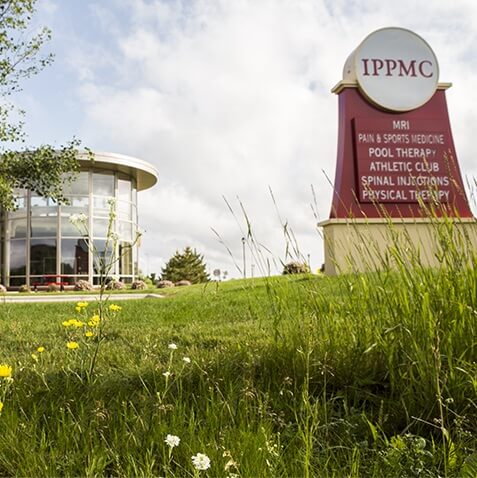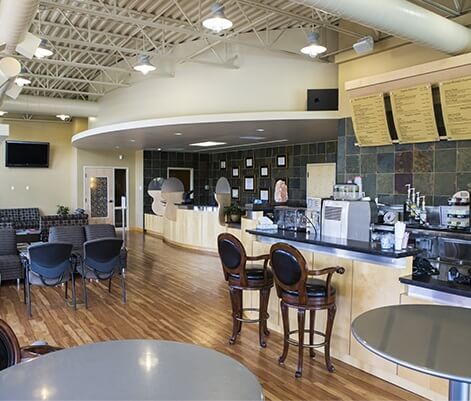Source: MSN Health
Ice baths have been long regarded as the hail mary of muscle recovery, but new research from Queensland University of Technology and The University of Queensland is throwing cold water on its supposed efficacy.
In the study, published in the Journal of Physiology, researches asked 21 physically active men to begin a strength-training regimen two days a week for 12 weeks. About half the group withstood a 10-minute post-workout ice bath at a numbing 50 degrees Fahrenheit, while the rest had a warm down on an exercise bike. At the end of the 12 weeks, those who performed an active warm down had more strength and muscle mass than those who cooled down in an ice bath.
A subsequent follow-up study took muscle biopsies from men after they performed single-leg strength exercises, then either took an ice bath or actively warmed down. This time, researchers found that ice baths stunted activity within satellite cells—essentially muscle “stem cells”—and activity in pathways needed to build bigger, stronger muscles.
"We found that cold water immersion after training substantially attenuated, or reduced, long-term gains in muscle mass and strength," says Dr. Llion Roberts, one of the study authors.
The researchers surmise athletes who use ice baths after workouts will see less long-term muscle growth than those who choose active warm downs. The reason why this happens isn’t entirely definitive, but their best guess is that cold water immersion reduces muscle blood flow.
Bottom line: While the cold water may numb your sore muscles and help heal injuries, it’s not the best recovery method after a strength session. Here are 10 great recovery methods to try instead.
MASSAGE
Massages feel ah-mazing, especially after a grueling workout—and their benefits aren’t just skin deep either. Soft tissue massage is exceptionally good for bone-weary athletes and people with inflammation-related chronic conditions like arthritis and muscular dystrophy, according to research from McMaster University. Vigorous exercise causes small tears in your muscle fibers, and your body's natural repair process naturally leads to inflammation and soreness.
To see if massage truly aids recovery, the researchers biopsied volunteers’ legs over the course of three sessions—once while at rest, a second time after they’d vigorously exercised on a stationary bike and received a 10-minute massage on one thigh, and a third biopsy two and a half hours after the second to track the repair processes between the massaged and un-massaged legs.
Unsurprisingly, massage reduced the production of cytokines, which play a critical role in inflammation, and stimulated mitochondria—the tiny powerhouses inside your cells that convert glucose into energy for cell function and repair. So make sure to schedule regular massages; your muscles will adapt better to the demands of increased exercise.
EPSOM SALT BATH
You may not be keen on taking baths, but soaking in Epsom salts can have some seriously relaxing effects on your mind and body. The salts contain magnesium sulfate, which help promote muscle relaxation, so your achy, cramped problem areas loosen. Internally, as your muscles soak in the solution, your blood vessels dilate, releasing some of the built up waste products in your body. Plus, the heat from the bath will help you release even more pent-up metabolic waste and toxins in your body, since it enhances perspiration.
ELECTRICAL STIMULATION
When it comes to restoring work capacity in your skeletal muscles, electrical stimulation helps you recover faster than traditional passive rest, according to research published in the Journal of Strength and Conditioning Research. In the study, participants’ maximum voluntary contraction (greatest amount of tension a muscle can generate and hold), work capacity, and blood flow (in calf muscles) were measured 10 minutes before they went through an extensive run session, then tested again both four hours and 18 hours after. Two days later, after resting, the runners completed another run.
The EMS increased their maximum voluntary contraction, work capacity (likely because fast twitch muscles were activated), and blood flow. When it comes to a speedier recovery, it’s no shock electric stimulation shows great promise. Most physical therapy centers are equipped with an EMS machine, but can also get one of your own. Try Marc Pro, an over-the-counter portable electrical stimulation device that comes with adhesive electrode pads and knobs for adjusting intensity. $649.95, marcpro.com/store. Payment plans available.
FOAM ROLLING
If you’re like most Americans, you sit for a good portion of the day, so by the time you hit the gym, you’re body’s locked up and more prone to injury. Foam rolling helps increase your muscles’ range of motion and elasticity before a workout, and there are even more benefits after. You can relieve any post-workout tightness or pain, and help break up scar tissue or knots that could otherwise cause chronic aches and pains if left unattended.
Furthermore, vibrating foam rollers can maximize results by penetrating deeper into your muscles (think deep-tissue massage meets traditional foam roller). In fact, a study from the American Journal of Physical Medicine & Rehabilitation found vibration therapy after resistance training delayed the onset of muscle soreness and significantly recovered athletes’ range of motion (as compared to young men who didn’t receive any treatment). Foam rolling has also been known to help flush out waste products and increase blood circulation—so get rolling.
Try RollingFWD High-Tech Vibrating Foam Roller, available in 36” full length or 18” travel size. It’s equipped with three speeds, soft touch foam, plus an 11-hour lithium ion battery. $199 for 18” and $249 for 36” via Kickstarter. Limited availability began September 16.
COMPRESSION
If you’re a sprinter, basketball player, or bodybuilder, compression gear can be incredibly advantageous, according to a 2013 review of more than 30 studies from the International Journal of Sports Physiology and Performance. In situations where an athlete is engaging in explosive movements—like sprinting, leaping and jerking—compression gear is definitely a go. Athletes observed improvements, though small to moderate, in their recovery of maximal strength and power (especially in vertical jumps), reductions in muscle swelling and perceived pain, and the presence of blood lactate.
Try SKINS RY400 Men's Compression Long Tights for Recovery. The gradient compression delivers more oxygen-rich blood to your resting muscles, reducing tenderness and delayed onset muscle soreness. $83.99, skins.net/usa.
And don't count out compression technology in your everyday life. ITEM m6 is the first-ever legwear brand to create fashion-forward, medical-grade socks (read: you won’t look like you walked out of a hospital, but you'll feel the difference) that help improve the flow of oxygen through your entire body. From your morning commute to your flight overseas, these are for the man who does it all. $34-$55, shop.itemm6usa.com.
SLEEP
Your body’s natural production of growth hormone (muscle-building chemical) increases during deep stages of sleep, as does protein synthesis. That’s why you always hear how athletes get about eight to nine hours of shuteye every night, according to the National Sleep Foundation. You need that time to properly recover from a hard workout.
POST-WORKOUT PROTEIN
Throwing back a protein shake or eating a protein-filled meal after your workout ensures your body has enough fuel to rebuild and recover. The same goes for nighttime. According to research published in Medicine and Science in Sports and Exercise, casein protein ingestion immediately before sleep resulted in increased circulating amino acid levels, whole-body protein synthesis rates, net protein balance, and overall recovery in young men.
CHOCOLATE MILK
The perfect recovery ratio of carbohydrates to protein is 4:1, according to a growing roster of studies. So if you're out of protein-shake mix, instead of throwing back a sugary sports drink, opt for chocolate milk. Believe it or not—believe it, actually—your childhood favorite is a powerful recovery option, according to a study from the Journal of Applied Physiology, Nutrition, and Metabolism. Researchers found exercisers are able to retain more than twice the amount of fluid in chocolate milk than in a sports drink after a workout. In short, when it comes to chocolate milk, your body is able to absorb more protein in less volume.
TART CHERRY JUICE
Jewel-toned fruits are generally the most nutritious because the bright colors come from nutrients. In this case, the red color in cherries comes from anthocyanins, which help reduce pain and inflammation, effectively improving exercise recovery time, reducing muscle damage, and oxidative stress, according to research from the Scandinavian Journal of Medicine & Science in Sports. Don’t go overboard, though; limit yourself to one cup a day at most and reap the benefits.
WATER
When you work out, you need to replenish the water you lose from sweat, because exercising while dehydrated can damage your muscles and reduce your body’s ability to repair itself. If you’re thirsty, drink. If your pee looks like apple juice, drink. If you haven’t had a drink of water in a few hours… you get the gist.


